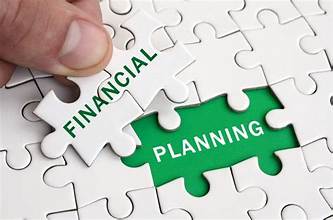Who needs a Financial Plan provides a reasonable approach to the construction and management of a financial plan. Of course it assumes all would benefit from having a plan that is periodically reviewed and updated. Roughly 2/3rds of the people in the US do not have a financial plan, yet 74% are considered financial literate. It raises the issue, how much better off would we be if more had a managed financial plan in place. Perhaps, there would be less personal bankruptcies, less debt, and more millionaires. Even though most are considered financially knowledgeable, many consider the process of constructing and maintaining a financial plan to be tedious and boring. Spending time collecting and chasing detailed financial date is unappealing. However, overspending and lack of good budgeting is a leading cause for financial failure.
If I could go back in time. Having a financial plan that guided my financial decisions would have been among my highest priorities. Below is an outline for a simple financial plan. Once constructed, any good money management software can be used to maintain your financial plan. Although there are many financial management tools, Quicken is one I’m most familiar with.
Understand your current financial situation
- First and foremost, know your income and expenses. Income minus operating expense equal Net Income. Let’s pause here. The amount of net income is it. This fact cannot be overstated. Spending more than you have puts you into debt. Although the use of credit may be necessary, it should be avoided at all cost.
- Identify poor financial habits. If you have frivoles expenses, now is the time to consider eliminating them. Freeing up unnecessary expenses will raise your level of Net Income, which can be used to fuel other parts of you plan.
- Compute your Net Worth, which is Assets minus Liabilities. Assets are the value of savings, investments, and property owned. Whereas liabilities are debt and outstanding loans.
Thus, if you had a mortgage, the market value of your home is the asset amount. Whereas the outstanding amount you owe on the mortgage is a liability, and the monthly mortgage payment is an expense. An investment management software tool will walk you though the set up of these parameters.
Identify Financial Goals
- Goals should be SMART (specific, measurable, achievable, realistic and time bound). For example, if you plan to fund your children’s college cost, be (S) specific about the total amount required. You need to be able to (M) measure the amount saved thus far. It must be (A) achievable before the funds are needed. It’s must be (R) realistic, i.e. the money to make payments into the plan is available, and finally the plan can be completed when the children are ready to start college – (T) time bound..
- Ensure your Financial Plan is a living plan that considers short term and long term goals, and is reviewed and updated periodically. For example, you can have a goal for retirement income, a goal to cover college, a debt reduction goal, etc.
Establish a Budget
This is perhaps the most difficult part of the financial plan – construction and management of a budget.The day to day temptation to spend more than you have is always present. It’s how we create credit card debt. When constructing a budget, it’s important to align your spending with your financial goals. By systematically tracking and reviewing your income and expenses, provides insight to where your funds are being spent. If the results do not align with your savings, debt, and discretionary spending goals, then adjustments are needed. At the end of the day, you must have a balanced budget.
Insurance Coverage
Take a look at all of your insurance policies to ensure they are adequate and updated. This includes Life, Health, Homeowners, and Auto insurance policies. You can save money if premiums are paid annually rather than monthly. Also, don’t put off life insurance just because it’s not mandated. As the income earner of the family, you are the most important financial asset. If you fail to cover the wage earner with an inadequate amount of life insurance the financial plan can be adversely impacted and fall apart if the insured dies prematurely.
Although Term Life insurance is the most affordable type of coverage, it may fall short in length of coverage and insurability amount. A permanent policy like Whole Life insurance or Equity Indexed Universal Life (EIUL) insurance may be a better choice. I urge you to take a look at EIUL as life insurance and an investment vehicle. The cash in the cash account is accessible tax free, making it a choice for retirement, education or other long term investment. See more here.
With respect to college funding, an EIUL is available to fund college expenses, since the cash account is a source of tax free income. However, if the insured does not qualify due to poor health, a 529 fund that grows tax free is an alternative.
Retirement Plan
Some retirees continue to work well into typical retirement age. Perhap, it’s because they enjoy what they do. O,r they need to supplement their retirement income. However, the promise to have a paying job when you retire is not guaranteed. Poor health or just plain old ageing will eventually slow us down. Thus, your retirement plan should assume that pension income from a retirement plan is all that’s available during retirement age. Also, social security income is also available to those who qualify. Given that, you need to determine the amount of income needed during your retirement years. In addition, if your company offers a 401k or an IRA with matching fund,
Consider other Investment Firms
In addition, if your company offers a 401k or an IRA with matching fund, only invest to the maximum matched amount, because that is free money. Beyond that amount, you will have more diversity of choices with an investment company. So if you need to save more beyond the matching fund level, consider looking at another investment and management company to invest more.
There are a ton of investment companies that have varying degrees of support to aid in the management of your retirement funds. These services range from platform support (that is checking accounts, retirement education material, and seminars), to managed account support (where a management team will execute the buying and selling of securities to grow your account). You indicate the level of risk and they do the rest.
For the most part, these management companies buy and sell mutual funds to manage the growth and protection of your retirement fund. As you may know, mutual funds consist of stocks and bonds, that carry some level of risk. However, if you prefer much lower risk, consider Equity Indexed Universal Life Insurance (EIUL) as a safer investment. Some percent of your total investment can be in an EIUL. An EIUL has a life insurance component that pays the beneficiaries tax free death proceeds. In addition, the cash account can be a source of tax free money, accessible anytime. Go here for more information.
Debt Reduction Plan
If you have accumulated a large amount of debt, an approach would be to list them all prioritized by interest rate, and pay off the highest interest rate ones first. Pay more than the listed minimum amount, the more the better. After that, pay off the second on the list. Continue this process until all are paid. Each time paying more than the minimum payment.





